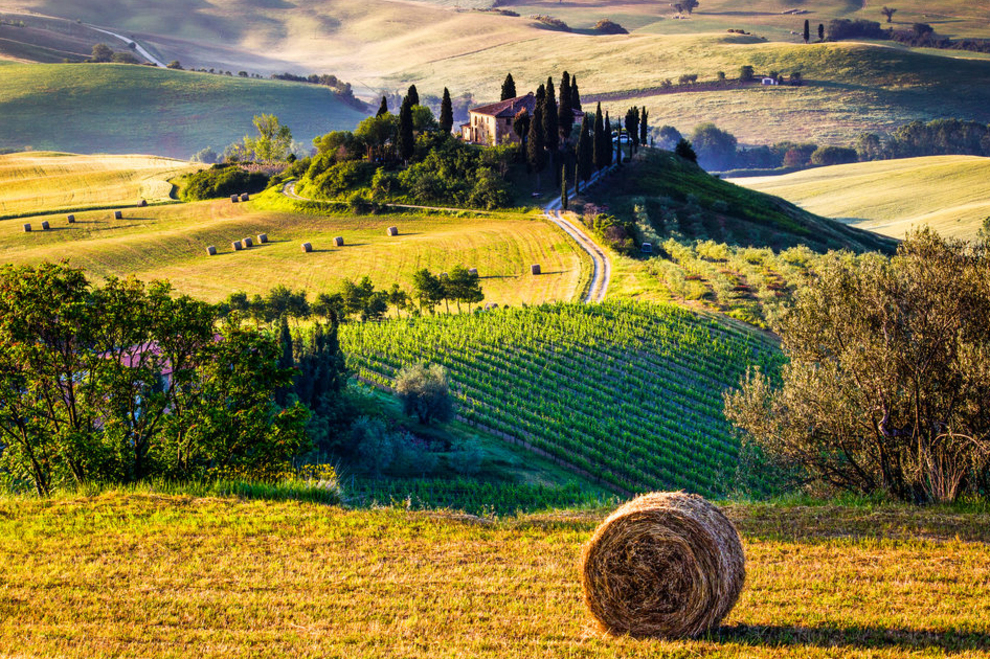
“Made in Tuscany” export: food and wine, fashion, and the luxury real estate sector are a hit abroad
High-quality wine and oil export, food, fashion, and luxury properties for sale
Luxury villas and farmhouses, as well as local cuisine and products, make Tuscany a renowned destination for both Italians and foreigners. Not only do tourists and buyers travel to Tuscany – this region also reaches abroad through exports. Broker Immobiliare Exclusive Real Estate lists luxury villas and farmhouses for sale in Tuscany, a region at the top of the list for high fashion, delicacies, and luxury properties.
Not only features that make Tuscan farmhouses unique attract buyers from all over the world, but they are also recreated outside of Italy to give properties an extra touch of class. Visible stones, terracotta floor and roof tiles, marble and travertine floors, and typical mandolato are a hit especially in California, where Tuscan style villas surrounded with olive groves and vineyards recreate a Tuscan atmosphere. Tuscan architecture, however, is not the only feature to be a hit outside of Italy.
When it comes to style, it isn’t only Tuscan homes to be popular, but also Tuscan fashion. There are several Florentine fashion houses whose clothes are exported in the world, such as Gianfranco Lotti, Gucci, Roberto Cavalli, Ermanno Scervino, Stefano Ricci, Patrizia Pepe, Enrico Coveri and Emilio Pucci. Gucci and Salvatore Ferragamo, founded respectively in 1921 and 1927, are among the first fashion houses in Florence to have paved the way for others. It is therefore not by chance that the most significant fashion show in Italian history happened in Florence, on 12 February 1951. Five important buyers from the United States were invited to Villa Torrigiani by marquess Giovanni Battista Giorgini, who wanted to promote fashion Made in Italy, which he did with success – the spotlight for fashion moved from Paris to Florence.
Also in the realm of fashion, Florence is famous for tanning. The city has been famous for tannery as early as the 1300s, and Santa Croce sull’Arno still has a “distretto del cuoio” (“leather district”). According to the Associazione Conciatori, around 35% of Italy’s leather products and 98% of Italy’s shoe soles are produced there. It is estimated that in 2021, out of the total turnover from Made in Italy exported abroad from the province of Florence, 61.2% was from leather products, while 24.3% from clothing.
However, what makes Tuscany world-famous, even more than architecture and fashion, is the production of wine and extra-virgin olive oil. DOC and DOCG categories – respectively “controlled origin denomination” and “guaranteed and controlled origin denomination” – are used in winemaking to label bottles and certify both the quality of vines and of wine production. Many of these are exported abroad, such as Brunello di Montalcino, Carmignano, Chianti, and Chianti Classico, among many others. It is estimated that 840 million euros worth of Tuscan wine were exported from January to November 2021. But as the wording is similar, what is really the difference between DOC and DOCG? When wine is labeled DOC, it means it was produced in a specific area with a specific production method approved by a decree from the Ministero delle Politiche Agricole Alimentari e Forestali. Wines labeled DOC for at least ten years may be labeled DOCG after organoleptic and physical chemistry tests and approval of production, including bottling and tasting.
Tuscan olive oil, which is exported mainly to the United States, the United Kingdom, Germany, Japan, Denmark, and Sweden, also has labeling certifying its quality, such as IGP (Protected Geographical Indication) and DOP (Protected Origin Denomination). To be awarded and IGP labeling, it is necessary for only one production phase to happen in a specific geographical location making the product unique. DOP labeling is more selective and certifies that the entire production cycle, from harvesting to bottling, happens in a specific location with unique features. It is estimated that 70% of IGP Tuscan olive oil exported abroad is exported to the United States.
Of course, aside from wine and olive oil, Tuscan delicacies are also exported. The products most exported abroad from Tuscany are Tuscan prosciutto, finocchiona, Prato mortadella, Colonnata lard, and several types of cheese, such as Tuscan pecorino, Maremma Pecorino, and pecorino from the Pistoia mountains.
Purchasing a luxury property in Tuscany with professional assistance from Broker Immobiliare Exclusive Real Estate means having the chance to live in a region world-renowned for exportation of its high-quality products.
